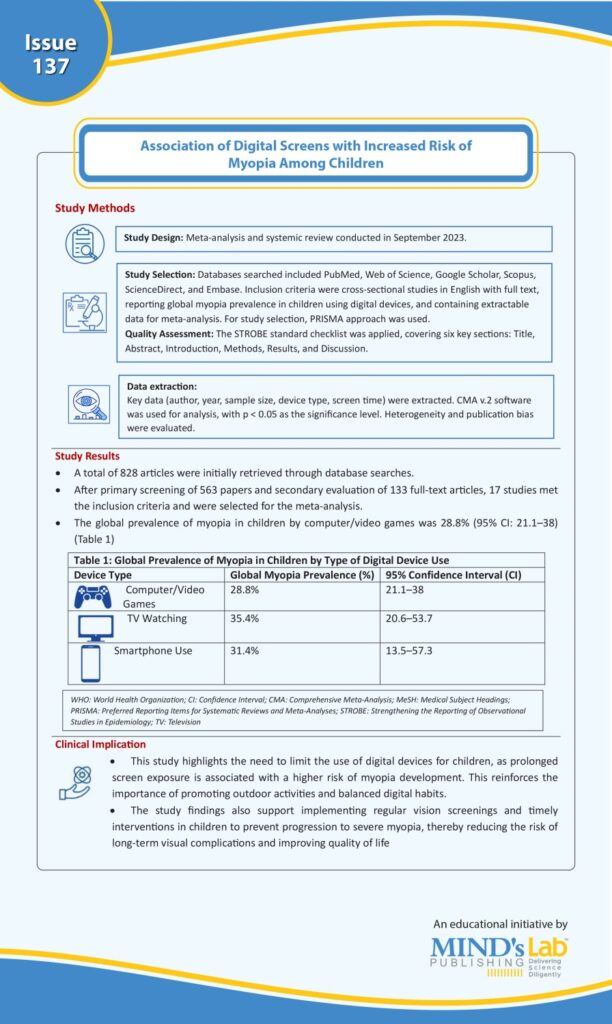
Myopia, a standard refractive error where light focuses in front of the retina, is the leading cause of distance vision impairment. Its prevalence is rising globally, especially in East Asia (up to 62%). By 2050, 49.8% of the global population will be affected by this disease, and 9.8% will experience the severe type.
The key risk factors include genetics, reduced outdoor time, increased digital screen use, and early screen exposure—even before age 2. Myopia not only affects children’s vision and development but also poses a serious public health and economic burden, costing billions annually. Early intervention through lenses, pharmacologic agents, and behavioral modifications is vital. The WHO emphasizes education and prevention strategies, including digital medicine, to manage this growing epidemic effectively.
A study by Salari N et al., published in the journal “BMC Pediatrics”, investigated whether digital device use is associated with increased global prevalence of myopia in children. Using a systematic review and meta-analysis approach, databases including PubMed, Scopus, and others were searched (up to May 2024), following PRISMA and STROBE guidelines. Out of 828 initial articles, 17 met the inclusion criteria. The global prevalence of myopia was 28.8% (95% CI: 21.1–38) for computer/video games, 35.4% (95% CI: 20.6–53.7) for TV watching, and 31.4% (95% CI: 13.5–57.3) for smartphone use. The study concluded that digital screens are significant risk factors for childhood myopia and emphasized limiting screen time and promoting early screening to improve children’s visual health (See Graphic).

(Source: Salari N, Molaeefar S, Abdolmaleki A, Beiromvand M, Bagheri M, Rasoulpoor S, Mohammadi M. Global prevalence of myopia in children using digital devices: a systematic review and meta-analysis. BMC pediatrics. 2025;25(1):325.)
